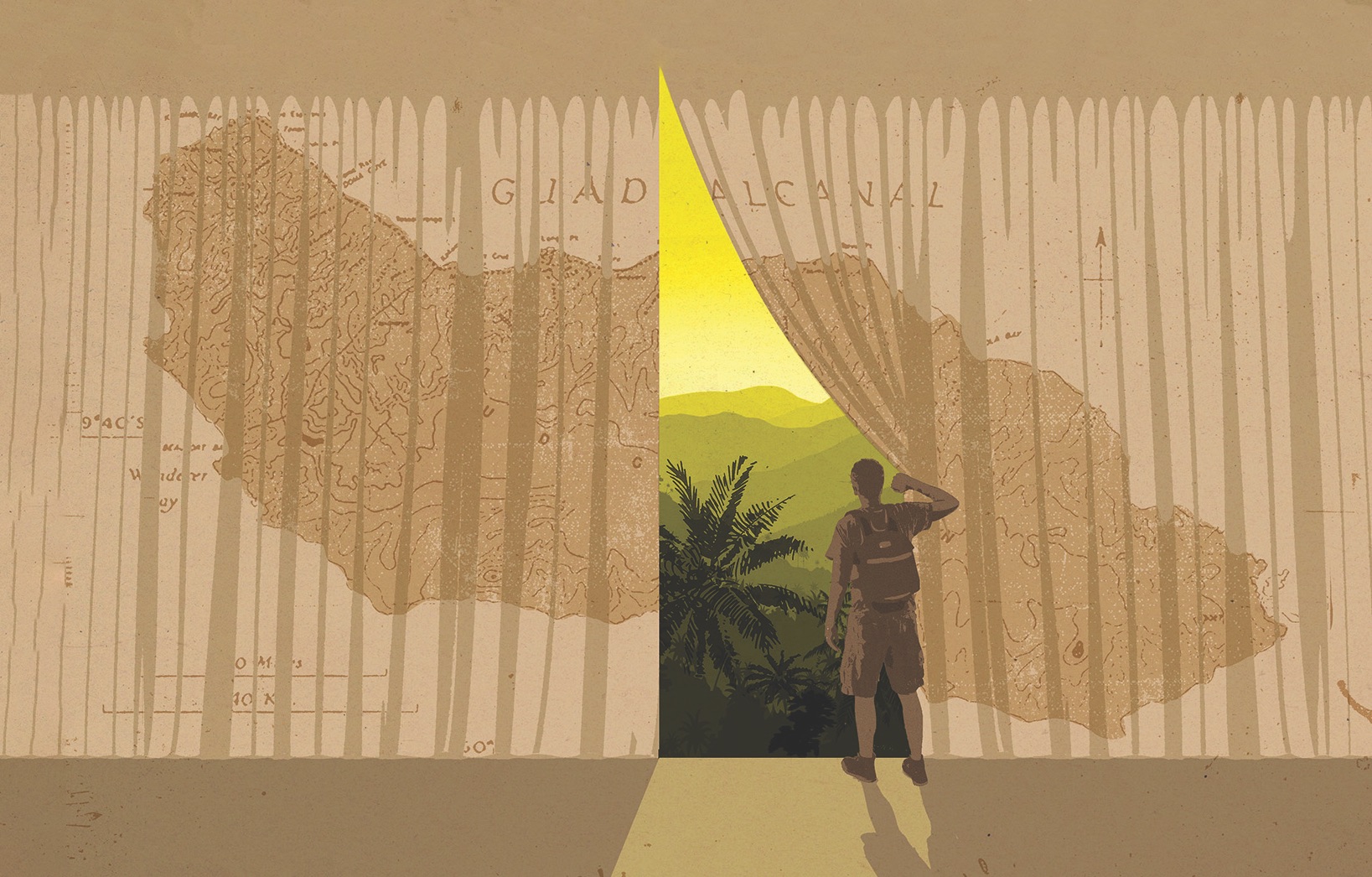It’s awfully far away for most and pretty remote, but I can think of few World War II battlegrounds that are better to visit than Guadalcanal in the South Pacific—a place that really got me thinking about the nature of strategic importance. We’re often reminded of the vast numbers involved in the fighting on the Eastern Front, and many historians have claimed this was why it was there that the war against Nazi Germany was won, rather than in the West, where the numbers were comparatively lower.
Visiting Guadalcanal, however, led my thoughts to the relationship between boots on the ground and strategic importance. I’ve always believed that to really understand how a battle unfolded, you need to walk the ground; suddenly, what had seemed a two-dimensional and mostly monochromatic place becomes three-dimensional and thrust into vivid Technicolor. You can see how landscapes interconnect, and that, in turn, makes you understand what really happened with greater clarity. On Guadalcanal, this is especially rewarding because much of the areas of fighting on this remote island have changed little in the intervening years.
It was blisteringly hot and humid when I went there last May. As I tramped up to Galloping Horse, a key feature in the hills and the scene of some of the fiercest fighting, my shirt became drenched within minutes while my admiration for those who fought here rose another notch as I considered what was involved in simply existing—let alone fighting—in this inhospitable place. Battle debris was everywhere: bullets, shell cases, magazines—I couldn’t walk a few yards without spotting something. Then, on Bloody Ridge, we found the position from where Sergeant John Basilone of the 7th Marines famously fought his Medal of Honor action. Remains of American foxholes abounded along that position, but right at the spur’s end, as it sloped into dense jungle, the strength of the defensive position quickly became crystal-clear.
So, too, did the fighting’s desperate nature. Remains of the perimeter barbed wire were still in place. When I crouched in one hole, I found myself looking down the slope and imagining the Japanese emerging through the trees and charging. Moments later, I noticed a round tin lid; then, having cleared away some dead leaves, six more. Examining them, I realized they were from hand-grenade tubes—the cardboard had long since rotted away, but the lids remained. They must have been dropped there back in October 1942 as the Marines hurled the grenades toward the advancing enemy. It made the hair on the back of my neck stand up and was a reminder that in jungle warfare, the fighting was often very close-quartered indeed.
From Bloody Ridge, it became clear why this bit of otherwise unremarkable ground was so important: only a mile or so away was the airfield, vital for supply, defense, and as a bomber base—the one airfield that could be carved out of the almost totally mountainous Solomon Islands. In fact, it’s only this stretch of northern coastline that is really habitable. The island is also small in scale. You could almost reach out and touch the airfield from Bloody Ridge.
Suddenly it became obvious why so comparatively few fought here; its remoteness, size, and geography limited the numbers that could be brought to bear. There simply wasn’t room for more. Nonetheless it was here, on Guadalcanal, that the Americans stopped the advancing Japanese tide in World War II. Between July 1942 and February 1943, the U.S. won the naval battle, the air battle, and the land battle—initially with barefaced courage, but then by grinding down the enemy with increasingly superior lines of supply.
It meant this tiny island was a place of vital importance in the war, and yet compared with the numbers involved on the Eastern Front, it was a pinprick. It reminded me that numbers of men involved and strategic importance do not necessarily go hand in hand and are not the best metric by which we should judge the impact of the war’s battles. ✯
This article was published in the October 2020 issue of World War II.

